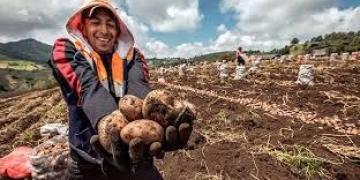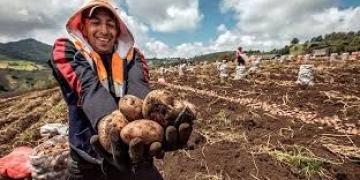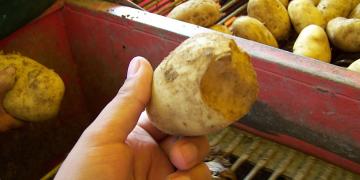Bolivia (La Paz): More than 3,000 hectares of potato crops and other crops are estimated to have been lost due to the rains
In the valleys of Sapahaqui and Luribay there are losses of fruits and vegetables, while in towns in the Altiplano, there is damage to potato, vegetable, barley, oat and fodder crops.

The heavy rainfall and flooding, which began in December 2024 and marked January and February of this year, left a loss of more than three thousand hectares of agricultural crops, according to a preliminary estimate by the Federation of Municipal Associations of Bolivia (FAM).
The president of the FAM and current mayor of Tihuanaco, Flavio Merlo Maydana, in an interview with Visión 360, indicated that of the more than 80 municipalities affected nationwide, the rainfall hit the towns and provinces of La Paz the hardest.
In valleys such as Sapahaqui and Luribay, he said there are losses of fruit and vegetable crops, while in towns in the Altiplano, there is damage to potato, vegetable, barley, oat and fodder crops.
“More than three thousand hectares of crops were affected by the rains. Some municipalities have had their production affected by 30%, 40% and even 50%. Yields are lower, for example, if the forecast was eight tons per hectare, we will only have two to three tons,” he lamented.
According to Merlo, this means a lower supply of food for consumption by communities and of surpluses for sale in cities. In addition, there will be a shortage of fodder for animal feed.
He pointed out that municipal governments do not have sufficient resources to deal with the consequences of the rains, which is why they are coordinating with the Government and Civil Defense to help the affected population.
According to Merlo, climate change has caused extreme weather events such as drought, hail, and rain. “Sometimes it rains too much, 200 to 300 millimeters that used to fall in a three-month period now occur in a week. The El Niño or La Niña phenomenon brings sudden changes in the climate,” he stressed.
Fuente:




